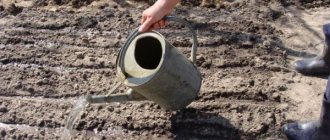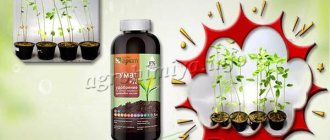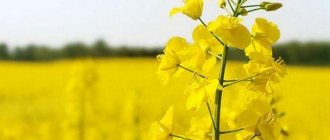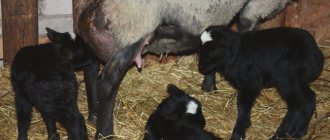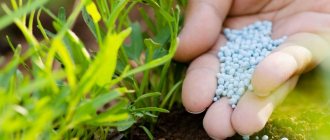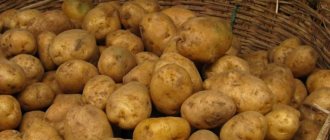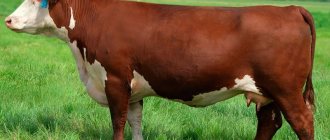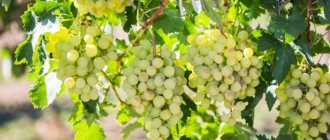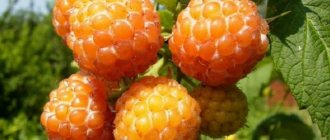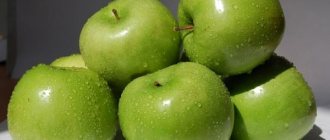Meat and bone meal is an important product for processing waste from the meat and fishing industry. Widely used livestock farms and poultry farms as a valuable protein feed, a source of minerals, vitamins, trace elements and other useful compounds. Its additions to grain and other feeds make it possible to achieve a balanced composition and nutritional standards, significantly increase the productivity of cattle, pigs and chickens, and speed up the rearing of young animals.
Regular consumption of such flour by animals and birds allows them to improve immunity, reduce the risk of metabolic disorders, mineral deficiency, diseases of the nerves, heart and blood vessels. The product has become a cheap raw material of animal origin for premix in the production of animal feed . In its pure form or as part of concentrates, it is included in the diet of pets - cats and dogs, reducing the cost of other food. As an alternative to charcoal, European countries use flour as a natural fuel for energy production and waste combustion.
Description and composition
Meat and bone meal is a dry, crumbly powder with a specific odor, not very pleasant for animals, but not putrefactive or musty. The grind size and uniformity of the composition are important: there should not be dense lumps and granules that do not crumble when pressed, measuring more than 1.27 cm in diameter and no more than two diameters in length. The color of the powder depends on the manufacturing method and the composition of the flour - most often grayish-brown. A yellowish tint indicates poor quality due to the presence of chicken feathers, which negatively affects poultry.
The packaging must contain information about the manufacturer, date of manufacture and variety, information that the products were manufactured in accordance with GOST 17536–82 “Feed flour of animal origin. Technical specifications” and instructions for the use of meat and bone meal. In this case, the composition will be truly balanced, comply with veterinary standards and will justify itself when breeding farm animals and birds. The quality of flour depends on the content of the initial chemical components. There are three grades, the highest, the first, corresponds to the minimum percentages of moisture, fat and ash and the maximum amount of protein.
Rules for application and application
The mixture may contain different amounts of required compounds, so there are certain rules based on the appropriateness of use.
Flour with a low nitrogen content requires additional addition of nitrate, urea or ammonium sulfate to the soil. The abundance of phosphorus forces an increase in acidity, although it is believed that meat and bone oatmeal acts much more mildly than chemical fertilizers.
Phosphonitrogen is recommended for use when growing succulents, which typically require more calcium than less exotic plants.
Opinions about the required frequency of application to the soil and the time at which it is best to do this differ in different sources, sometimes radically. Some vegetable growers are sure that it is better to fertilize at the end of autumn. Then, by spring, when it is time to plant the plants, the soil will become sufficiently concentrated for the full growth and development of garden crops.
Others are sure that the optimal time is spring. With this method of fertilizing, the plants will be supplied with the necessary substances as the fertilizer dissolves in the soil and penetrates from the soil. Then you don’t need to do much feeding, relying on the prolonged action of the valuable mixture.
Most recommendations from experts insist on an annual fertilizing process, citing the fact that before the next harvest the flour will have undergone complete decomposition. However, you can find other advice - for example, no more than once every 3 years, based on your own experience and the assurance that decay occurs much more slowly than is commonly believed.
When choosing a suitable substrate, the type of soil and plant variety must be taken into account:
- iron-deficient soil needs blood;
- when growing potatoes you need more nitrogen;
- Vegetable crops are covered with bones right during the digging process;
- roses need meat and bone or fish, which contain more calcium and potassium;
- for plants that prefer acidic soils, bone meal is not used (it cannot be used to fertilize azaleas and begonias, as well as rhododendrons).
Two methods of application to the soil are recommended - in dry form, by digging with a shovel or directly into the hole (for tomatoes and eggplants). Application in liquid form (infusion of powder poured with boiling water) is less common and is mainly aimed at urgent feeding of seedlings.
Manufacturing process
The raw materials are internal organs, embryos and whole carcasses of animals that turned out to be unsuitable for food purposes, residues from slaughterhouses and canning industries. Almost everything is recycled, and waste is minimal. Main stages of the manufacturing process:
- The raw materials are boiled and cooled to a temperature of 25° C.
- The cooled mass is crushed in special equipment.
- The resulting powder is sifted through a sieve.
- To remove metal-containing impurities, the composition is passed through a magnetic separator.
- To prevent the fats contained in flour from going rancid, the product is treated with antioxidants.
- This is followed by packaging in pre- disinfected containers . For this purpose, soft containers for bulk substances, multi-layer paper bags and fabric bags are used.
Pig food
In addition to the above, adding flour from 5 to 15% to the total weight of the feed significantly stimulates weight gain and improves the quality of meat. Good results were obtained both when caring for sows and boars, as well as for growing young animals, with the exception of very small piglets recently weaned from their mother. For pigs, a product with a high ash content is especially recommended, which provides additional supply of phosphorus, sodium, calcium and iron. It is important to note that after flour is added to the original feed, its heat treatment is prohibited, as it leads to the loss of most of the proteins and vitamins.
Composition of bone meal - active substances
Long-lasting active substances in soil:
- Phosphorus
In the usual fraction from bones, the phosphorus content is up to 15% . There are concentrated meat and bone fertilizers - steamed and low-fat flour, the phosphorus content of which is 25% and 35%, respectively. Penetrating into the soil, phosphorus compounds bind to it and remain for a long time in the reach of the roots, providing them with nutrition throughout the entire growing season.
- Calcium
It is the main element of animal bones. 1 kg of calcium contains about 250 g. This fertilizer is a record holder among organic substances.
- Potassium
The content in bones is up to 3 g per kilogram , so for vegetable crops you need to add mineral or organic mixtures with a higher potassium content.
- Nitrogen in bones that are not thermally treated is in a higher concentration - up to 4%. If heat treatment was used, the amount is reduced to 1%.
In addition to the main nutrients, bone meal contains microelements - iron, magnesium, zinc, iodine, manganese, copper, cobalt.
Video: Super fertilizer - meat and bone meal
Cattle food
First recorded in England in 1986, an outbreak of mad cow disease is believed to have been caused by feeding meal made from the carcasses of infected sheep. This product contained the causative agent of spongiform encephalopathy. Since then, they have been trying to use mixtures based on poultry or pig meat to feed cattle.
Cows are herbivorous mammals and refuse to eat meat and bone meal. Then it is mixed with bran or mixed feed with a gradual increase in dosage , bringing it to 100 g per day per animal. Small livestock such as sheep and goats are fed no more than 20 g per day. In all cases, flour supplements make the diet complete and have a positive effect on weight gain, growth, fertility, meat quality and milk fat content.
Domestic product or import?
The Ministry of Agriculture of the Russian Federation is constantly discussing the possibility of limiting the supply of meat and bone meal from Europe, primarily from countries that supported sanctions against Russia.
Restrictions are possible; they will primarily affect producers of pet food - cats and dogs.
Pedigree, Purina, Whiskas and a number of other well-known brands purchase more than 50% of meat and bone meal imported from Europe.
And they are categorically against import restrictions. The argument is that Russian manufacturers have not yet reached the proper level of quality .
As for quality, this is a special topic for our:
- Meat holdings consider flour merely as a product of recycling unnecessary waste. Therefore, they do not engage in sorting of raw materials; quality is secondary for them.
- Small quality-oriented companies are few and far between and financially weak.
- In the Russian Federation there are no clear standards and definitions of the quality of meat and bone meal, and each manufacturer himself selects the composition of raw materials at his own discretion or based on his ideas about quality.
- Domestic equipment is designed primarily for bone processing, and the basis of high-quality flour is considered to be the meat residue on the bone.
- Foreign flour producers focus on well-established quality standards, which do not exist in Russia.
- Despite serious difficulties, a breakthrough in the quality of Russian flour is emerging. Innovative production technologies are already in use, product standards are being developed, and domestic equipment is being improved.
Flour in pet food is no more than 8%, but without it a complete food will not work, since it contains proteins.
Optimistic scenario: reorientation of companies that use imported flour to supplies from Belarus or from Asian and Latin American countries.
By the way, Belarus’ share is about 30% of all flour imports. The majority of imports are flour made in China.
Meat and bone meal in the diet of other animals
To meet the needs for protein, minerals and vitamins, meat and bone meal is added to the feed of ducks, geese, rabbits, guinea fowl and turkeys. Its share of the total amount of food varies from 5 to 10%. This enrichment of the diet increases productivity and stimulates growth and weight. It is only important to monitor the quality of additives and use them correctly.
Meat and bone meal is a budget-friendly complementary food option for dogs nursing and bearing puppies, with rickets, osteoporosis, problems with joints and heart. As a meat substitute, up to 100 g of it can be used daily in the diet of adults, allowing for slight savings. Although now pet stores offer a variety of balanced foods with protein, vitamin and mineral supplements designed for all breeds of dogs.
Classification
Based on the amount of protein, fat, carbohydrates and minerals, meat and bone meal is divided into 3 classes.
| Substance content % | Class | ||
| 1 | 2 | 3 | |
| Moisture | 9 | 10 | 10 |
| Protein | 50 | 42 | 30 |
| Fat | 13 | 18 | 20 |
| Ash | 26 | 28 | 38 |
| Cellulose | 2 | 2 | 2 |
Class 1 bone meal is considered the highest quality and balanced in composition.
Transportation and storage rules
The content of significant amounts of proteins and fats in flour requires compliance with certain conditions of transportation and storage. In unopened original packaging, the shelf life is no more than 12 months. Exceeding this time, getting wet and overheating can not only make the food inedible or useless, but also cause harm to the animals.
During transportation , vehicles are used whose bodies provide optimal protection from weather influences. The maximum weight of product packaging should not exceed 50 kg. Dry (with a relative humidity of up to 75%), well-ventilated enclosed spaces, without access to moisture and sunlight, as well as children and animals, are suitable for storing supplies. The temperature in them should be maintained no more than +30° C, otherwise the fat contained in the product will decompose with the formation of the highly toxic substance acrolein.
How to store
Meat and bone meal, the instructions for use of which were given above, is a product containing a large amount of protein and fat. Therefore, it must be stored correctly. Otherwise, at best it will be useless, at worst it will negatively affect the health of animals or birds. A very important condition for preserving the beneficial properties of flour is compliance with the rules of its storage. Bags of this product should be kept in a dry, ventilated area. Contact with water or sunlight is not allowed.
The air temperature in the utility room or warehouse should not exceed + 30 degrees. Under no circumstances should the product be allowed to overheat, otherwise the fat contained in it will begin to decompose and release a toxic substance - acroline aldehyde.
Of course, you cannot feed expired products to animals and poultry. The permissible storage time for meat and bone meal is indicated on the packaging. Usually it is no more than one year.
As you can see, meat and bone meal is a truly healthy product and truly irreplaceable in animal husbandry. Including it in the diet can increase the productivity of cows, sheep, pigs, chickens, etc., as well as stimulate weight gain and growth. But you can achieve good results, of course, only by choosing a quality product and using it correctly.
